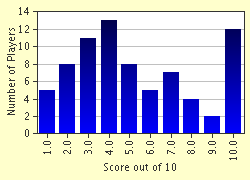Quiz Answer Key and Fun Facts
1. Where was Hogarth born in 1697?
2. In the 1720s, while working as an engraver, Hogarth attended the St Martin's Lane Academy, where he is generally thought to have received lessons in oil painting from Sir James Thornhill. How did Hogarth alienate himself from Thornhill in 1729?
3. Hogarth is widely known for his "modern moral subjects," i.e. series of works which tell a tale with a moral. Which was the first of these, produced in 1731?
4. In 1733 Hogarth painted a portrait of Sarah Malcolm. Prints of the picture at sixpence each found a ready sale. Who was Miss Malcolm?
5. Hogarth was a prominent campaigner for a parliamentary measure which became law in 1735 and which was widely known as "Hogarth's Act." What did the act do?
6. Perhaps the most famous of Hogarth's "modern moral subjects" was produced in 1733 and reproduced in engravings in 1735. It has inspired an opera by which composer?
7. In 1740 or thereabouts, Hogarth painted a female portrait which has been described as a forerunner of the Impressionist school. It is known by the name of the trade that the young lady carried on. What is it called?
8. In 1745 Hogarth painted a portrait of himself with a companion. Who was his fellow-sitter?
9. In 1751 Hogarth produce a famous pair of engravings. One is "Beer Street," depicting the health-giving properties of English ale. What is its counterpart?
10. Where is Hogarth buried?
Source: Author
TabbyTom
This quiz was reviewed by FunTrivia editor
thejazzkickazz before going online.
Any errors found in FunTrivia content are routinely corrected through our feedback system.

